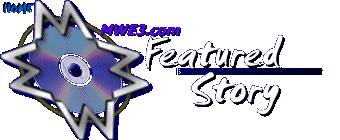PETE TOWNSHEND
The Music Must Change
by Robert Silverstein
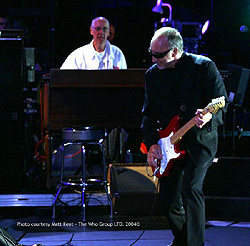 More
a musical institution than a rock group, The Who have overcome obstacles,
the smallest of which might have completely derailed a more complaisant
coalition. Proof of the enduring Who spirit can be clearly traced
back in time on a 2004 CD compilation release on Geffen / Chronicles.
Glamorized with nostalgic British Invasion packaging, The Who -
Then & Now anthologizes eighteen of the band’s most popular
hits—spanning 1965 till 1981—including original mono and
stereo mixes, album cuts and single edits of classic rock songs Who
fans know like the back of their hand now. But the real kicker topping
off this Then & Now collection are two brand new Pete Townshend
tunes showcasing a 2004 lineup of The Who—in essence marking
the band’s first new single release since 1982. Daltrey singing
Townshend has always captured the band’s spirit, and on these
two new Who songs, Pete and Roger—with Ringo’s son Zak Starkey
on drums, John “Rabbit” Bundrick (keyboards), Simon Townshend
(guitars) and ELP’s Greg Lake (bass)—reinstate the signature
Who sound. “Real Good Looking Boy”—the first of the
new songs—is a late 2003 recording first worked on before the
June 2002 passing of founding Who bassist John Entwistle. The other
new Who song here, “Old Red Wine”, was recorded this past
March 2004 with Pino Palladino replacing Greg Lake on bass. A fond
farewell to their old comrade, “Old Red Wine” oozes affection
for the Ox and is a fitting tribute to John Entwistle. After incredible
years of albums and endless touring, Townshend and Daltrey—now
in what Townshend calls “our new Everly Brothers format”—have
another chapter to live out in the Who saga and these first tracks
in over twenty years offer every indication that a forthcoming studio
album will be equally spectacular. A few weeks before the Who’s
upcoming Summer 2004 Far East tour—topped off by the dream vacation
seeing The Who at the Honolulu Blazedale Arena on August 3rd—Pete
Townshend spoke to Robert Silverstein on July 4th, 2004 about the
new Who and a range of rare remembrances.
More
a musical institution than a rock group, The Who have overcome obstacles,
the smallest of which might have completely derailed a more complaisant
coalition. Proof of the enduring Who spirit can be clearly traced
back in time on a 2004 CD compilation release on Geffen / Chronicles.
Glamorized with nostalgic British Invasion packaging, The Who -
Then & Now anthologizes eighteen of the band’s most popular
hits—spanning 1965 till 1981—including original mono and
stereo mixes, album cuts and single edits of classic rock songs Who
fans know like the back of their hand now. But the real kicker topping
off this Then & Now collection are two brand new Pete Townshend
tunes showcasing a 2004 lineup of The Who—in essence marking
the band’s first new single release since 1982. Daltrey singing
Townshend has always captured the band’s spirit, and on these
two new Who songs, Pete and Roger—with Ringo’s son Zak Starkey
on drums, John “Rabbit” Bundrick (keyboards), Simon Townshend
(guitars) and ELP’s Greg Lake (bass)—reinstate the signature
Who sound. “Real Good Looking Boy”—the first of the
new songs—is a late 2003 recording first worked on before the
June 2002 passing of founding Who bassist John Entwistle. The other
new Who song here, “Old Red Wine”, was recorded this past
March 2004 with Pino Palladino replacing Greg Lake on bass. A fond
farewell to their old comrade, “Old Red Wine” oozes affection
for the Ox and is a fitting tribute to John Entwistle. After incredible
years of albums and endless touring, Townshend and Daltrey—now
in what Townshend calls “our new Everly Brothers format”—have
another chapter to live out in the Who saga and these first tracks
in over twenty years offer every indication that a forthcoming studio
album will be equally spectacular. A few weeks before the Who’s
upcoming Summer 2004 Far East tour—topped off by the dream vacation
seeing The Who at the Honolulu Blazedale Arena on August 3rd—Pete
Townshend spoke to Robert Silverstein on July 4th, 2004 about the
new Who and a range of rare remembrances.
{editor - This interview was first was featured in a slightly
edited version in the July 2004 issue of 20th Century Guitar. I had
been speaking with Pete’s assistant Nic Joss for a quite a while
and she’d been very helpful sending me rare treats to feature
in the magazine as far back as 1999. After Pete blew his stack at
the vast range of questions I’d written, enough to fill a book,
I paired it down considerably, content in even having Pete do this
email interview. The Who had just released their first new music in
ages - two excellent new tracks on the Then & Now best of CD from
2004. Thanks again to Nic Joss for having Pete do this email interview
and also thanks to Pete’s former webmaster Matt Kent for e-mailing
me his excellent photography. Where are they now? I haven’t spoke
to either of them for the past 4 years and of course Pete continues
to record and achieved recent acclaim for the 2006 release of Endless
Wire, the first new Who album in ages.}
RS: The 2004 Then & Now best of The Who compilation features
the first new Who songs in over 20 years. Can you say something about
“Real Good Looking Boy”, which I understand is a tribute
to Elvis Presley and the song you wrote honoring John Entwistle, “Old
Red Wine”.
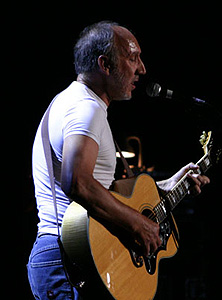 PT:
“Real Good Looking Boy”—there are two strands to the
song, one for me, one for Roger. My strand speaks of wanting to look
like a friend from my childhood, and being disavowed of the idea that
I might compare with him by my mother. Roger's strand speaks about
seeing Elvis for the first time, and being affected by the allure
and latent sexuality of his face. There is a third strand, which is
about the fact that Roger and I seem to have survived where others
have not. Which brings me to “Old Red Wine”. This is about
John loving old, dusty wine.
PT:
“Real Good Looking Boy”—there are two strands to the
song, one for me, one for Roger. My strand speaks of wanting to look
like a friend from my childhood, and being disavowed of the idea that
I might compare with him by my mother. Roger's strand speaks about
seeing Elvis for the first time, and being affected by the allure
and latent sexuality of his face. There is a third strand, which is
about the fact that Roger and I seem to have survived where others
have not. Which brings me to “Old Red Wine”. This is about
John loving old, dusty wine.
RS: Could you say something about the Pete Townshend SJ-200 limited
guitar that Gibson recently introduced? It’s not usually electrified,
but the Pete Townshend signature model has a pickup and a lighter
neck contour. How involved were you in designing the new J-200 signature?
PT: I did a lot of work on the neck. My very first J200 seemed to
have a thinner neck. I wanted the guitar to have a Fishman piezo—which
I believe sounds best through a Fishman amplifier designed for the
job—or very high quality studio stuff like Focusrite, API or
Neve when you are recording.
RS: What originally attracted you to the Gibson Super Jumbo 200? I
know that Elvis, Dylan and Ron Wood used it.
PT: It records so well. It has quite a crisp sound for such a large
guitar, and my first one (now in the Rock and Roll Hall of Fame Museum)
actually had a metal Tune-a-matic bridge. I may try this on a variant
of my signature model.
RS: I understand that a portion of the sales of the signature guitars
are going to the Double O Charity. Could you say something about your
charity work?
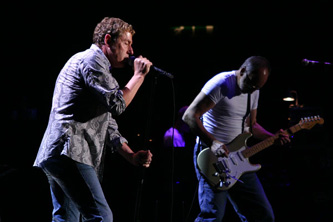 PT:
Double O provides funding for the treatment of alcohol and drug dependency,
especially where childhood trauma has been involved. I have done so
much charity work over the years, I don't want to list it. Let me
just say I do it for me, it helps me, I like doing it. If I still
get kicked down to hell I won't complain.
PT:
Double O provides funding for the treatment of alcohol and drug dependency,
especially where childhood trauma has been involved. I have done so
much charity work over the years, I don't want to list it. Let me
just say I do it for me, it helps me, I like doing it. If I still
get kicked down to hell I won't complain.
RS: There was also a limited edition Pete Townshend Gibson signature
SG from the ‘90s as well. Did that one sell out and if so do
they have any plans of coming back with it?
PT: Some of these sold for high sums. If it comes back now it will
definitely come back with a whammy bar!
RS: Did Gibson have a Pete Townshend signature Les Paul Deluxe? Is
there any other particular signature model guitar that you would like
to see reissued by Gibson?
PT: No Les Paul Deluxe as yet, but I'm thinking about it. I am also
thinking about Signature guitars by Rickenbacker and Fender. It would
be fun to make an indestructible guitar wouldn't it?
RS: So much of that great music you were writing and recording after
Tommy, including Who’s Next and Who Came First
was directly or indirectly related to the Lifehouse concept,
which was never fully completed by The Who. Do you think that Lifehouse
is sort of regarded as the Who version of Brian Wilson’s legendary
Smile album, in that like Smile, the Lifehouse
songs changed and carried on for years appearing on various Who albums
in different versions and incarnations?
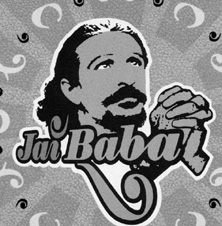 PT:
I still work on, inspired by Lifehouse, which was a dark vision
rather than a spiritual one. It was a fully landed work from the off.
The only reason I've continued to work with it is because I feel music
really does have the potential to reflect the human soul at a very
deep level.
PT:
I still work on, inspired by Lifehouse, which was a dark vision
rather than a spiritual one. It was a fully landed work from the off.
The only reason I've continued to work with it is because I feel music
really does have the potential to reflect the human soul at a very
deep level.
RS: Could you see bringing Lifehouse to Broadway or making
a movie of it one day?
PT: Not now. I've showed all my various treatments of it to all those
I know who produce and evolve Broadway shows and movies. No one has
felt it is strong enough to fly. I have written a new screenplay—The
Boy Who Heard Music—which is one final evolution of the Lifehouse
theme. This could fly, but only as an animation film I think.
RS: Speedy Keene was the first person outside The Who to specifically
write a song for The Who, in the case of “Armenia City In The
Sky” from The Who Sell Out. I know he recently passed
away. Any memories of how you met Speedy and his song writing contribution
to The Who Sell Out and is that what led to the eventual Thunderclap
Newman album?
PT: Speedy was the drummer for a band called 'CAT' which I believe
may have been named after the bass player—a certain Chris (Alan?)
Thomas who went on to produce most of my best solo albums. He then
served time as my driver, which was when it emerged he was full of
many lovely song ideas. I recorded his demo of “Armenia”
in my home studio and I think Kit Lambert (our producer) thought I'd
written it. We slinked it past before the band realized it was by
Speedy. The Thunderclap album was vital—Speedy was a unique songwriter
and a really cool drummer. I created the band for him.
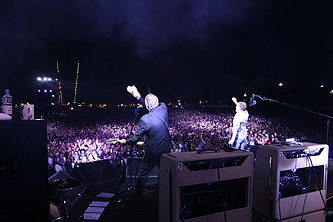 RS:
: Thunderclap’s anthem, “Something In The Air” is still
among the most stirring rock songs ever made. When did Speedy first
play you that song and can you recall playing bass and producing it
and did you ever wish that The Who had recorded that song?
RS:
: Thunderclap’s anthem, “Something In The Air” is still
among the most stirring rock songs ever made. When did Speedy first
play you that song and can you recall playing bass and producing it
and did you ever wish that The Who had recorded that song?
PT: He played it to me in bits. I had to coax it out of him. It would
not have worked for the Who—too plodding.
RS: I have a CD from 1989 called The Shadows At Their Very Best.
And both you and Eric Clapton wrote the liner notes for that. Can
you recall the influence The Shadows had on the then developing British
music scene in the early ‘60s?
PT: They didn't influence that scene in my opinion, they existed in
a late '50s time-warp of their own and had to struggle (as did we
all) to find a place in the pop world reinvented by The Beatles and
R&B. I went to their final concert a few weeks ago and they were
terrific. Cliff Richard sang a few songs and he was really good too.
They are all amusing, self-effacing, slick and old school.
RS: Your brother Simon Townshend is also a fine recording artist.
I thought his Among Us album sounded very Who inspired. Any
news on Simon you could relate? I know he recorded with The Who on
the new Then & Now songs.
PT: No news apart from the fact that he operates in my studio now
and works brilliantly with developing artists. He has a real knack
of bringing good songs to a great conclusion. A real producer in my
opinion.
RS: I hear you’re also planning new expanded deluxe editions
of Who’s Next and Live At Leeds, as well as your
solo album Empty Glass. Can you give us an early scoop on these
upcoming projects?
PT: Who's Next has missing master reels. I would like to hear
a 5.1 Surround version of Live At Leeds but it isn't scheduled
yet. Empty Glass is one I'd also like to do.
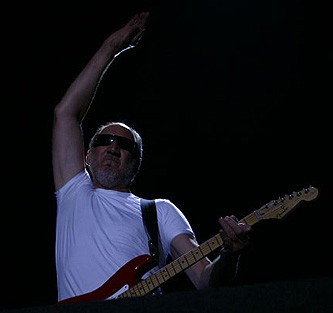 RS:
Just for the record, how did you come up with the name Eel Pie?
RS:
Just for the record, how did you come up with the name Eel Pie?
PT: I lived near an island on the Thames with that name.
RS: A couple years back your extensive Scoop series of home demo
recordings was anthologized by Redline Entertainment in the States
on a two CD set called Scooped. How involved were you in the final
track selection of Scooped and looking at your archives, will there
be any further upcoming Scoop releases?
PT: I don't edit the Scoop series. I just let Helen Wilkins decide.
I have loads of similar stuff, but there comes a point when work-in-progress
becomes tiresome for fans. It involves almost as much work from me
to prepare an unfinished track for release on CD as to finish it.
RS: I guess the Avatar box set on Eel Pie sold out because it was
recently reissued and reconfigured as a double CD set called Jai Baba.
Can you reflect back on the three Baba tribute albums from the '70s
and looking forward, do you think you’ll ever produce or record
music for another Meher Baba tribute / compilation album?
PT: I don't think I'll ever do another specifically devotional collection.
I was younger and brighter back then, Ronnie Lane and others like
him gathered to support the releases. Today, I work chiefly to maintain
the film archive of Meher Baba for posterity, and to help social causes
in the locality of his Tomb.
RS: Also I am still greatly moved by your Who Came First version of
“There’s A Heartache Following Me”. Wasn’t that
song one of Baba’s favorite songs?
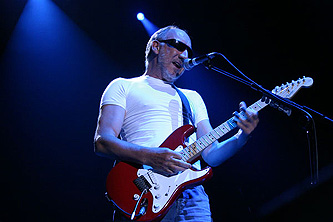 PT:
Yes it was. I feel Don Williams would also have been a favorite of
Meher Baba. I was introduced to his records by Ronnie Lane and Eric
Clapton.
PT:
Yes it was. I feel Don Williams would also have been a favorite of
Meher Baba. I was introduced to his records by Ronnie Lane and Eric
Clapton.
RS: Lastly about the Thunderclap legacy, there’s a 2003 reissue
of the Andy Newman solo album, Rainbow, on Eel Pie. You produced that
album. Andy has to be among the most unique players in the history
of rock. Is Andy Newman still around and can you shed any historical
light on his Rainbow album?
PT: Richard Seaman produced Rainbow for Track Records, I acted
as Exec. Andy is still around and ageless, I've tried to encourage
him to make another record. He was a fan of Bix. When Bix played piano
you can hear how Andy was influenced in the creation of his own method.
RS: Considering your impeccable skills as a film composer, citing
the work you’d done on both Tommy and Quadrophenia, are you considering
any other side projects like instrumental film scores?
PT: I think Tommy was such hard work I have fought shy of films.
(See new Tommy DVD, I do a long interview.) But my partner
Rachel Fuller is a trained orchestrator and we may take on a film
together as a trial when her new album has been released and settled
(Cigarettes And Housework. Universal release on August 10.
)
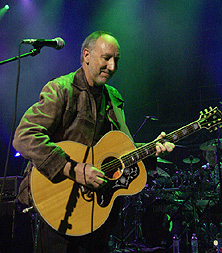 RS:
Can you say something about the Who's performance at the Isle of Wight
this past June and also about the upcoming tour of the West Coast
and the Far East?
RS:
Can you say something about the Who's performance at the Isle of Wight
this past June and also about the upcoming tour of the West Coast
and the Far East?
PT: Not a lot. IOW was weird in very cool way I thought, but we got
good reviews. I am enjoying being on stage (and traveling) more than
ever. I haven't quite risen to Bob Dylan's intense level of touring
and performing, but now I am beginning to understand why he does it.
I wanted to play Japan because Aerosmith will headline the Festivals
we play there - I feel safe under their friendly wing because they
are so huge there. They’ve been really generous to allow us parity
billing. Oz I just wanted to go and play again before it was too late.
I didn't like long-haul flying all that much, now I do - so that too
has changed. Most of all I am doing these shows to spend some time
with Roger this summer. We only see each other when we perform. After
all those tense years when we found it hard to agree, I now love being
with him professionally, almost unreservedly. Life's too short to
worry about the 'why' in all this. It's happening, we're lucky to
be able to play.
------------------
Thanks to Pete Townshend @ www.petetownshend.co.uk
Nic Joss and Matt Kent @ www.eelpie.com
all photos copyright (c) Matt Kent / Yearhour 2004
